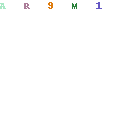Population
In 2019, the Seychelles had an average population density of 216 residents per km2. The population is concentrated in a few islands, mainly Mahé with about 90 per cent of the residents. Victoria is the dominant city.
Seychelles has a lower population growth rate than most other African countries. Nearly 90 percent of the population is Creole, including descendants of European immigrants, African slaves and, to a lesser extent, immigrant Asians.

Language
Native languages of the population are Seychelles or Seychelles Creole (seselwa), which is French-based. It is official language along with English and French.
Religion
According to thesciencetutor, in Seychelles, almost all are Christians. Of these, more than 80% are Catholics. The islands, which were uninhabited, were sifted as early as 1502 by Vasco da Gama, but not until 1756 did they come under French domination. The first French colonizers came the same year that the Catholic Church was founded in the country, namely in 1770. In 1794 Britain occupied the Seychelles, which by the Treaty of Paris in 1814 became British property and in 1903 became the British Crown Colony. The British takeover did not change much, but the residents continued to see themselves as French. Among other Christians, Protestants make up just under one-twentieth of the population, while the Anglican Church, established in the country in 1843, has just over twenty-one of the population as members. There are also small groups of other Christian communities, including Seventh-day Adventists and Jehovah’s Witnesses.
In 1976, the country became independent. According to the 1993 constitution (with amendments by 2011), the country is secular and religious freedom is guaranteed, but the constitution still contains some religious formulations.
State employees are entitled to paid leave to celebrate their religious holidays. There are no requirements for religious organizations to be registered. The government offers the religious organizations broadcast time in the stale radio, which several of the religious groups use.
The following days are national religious holidays: Good Friday, Easter Day, Corpus Christi, Mary’s ascension to heaven, All Saints’ Day, Mary’s Immaculate Conception, and Christmas Day.
